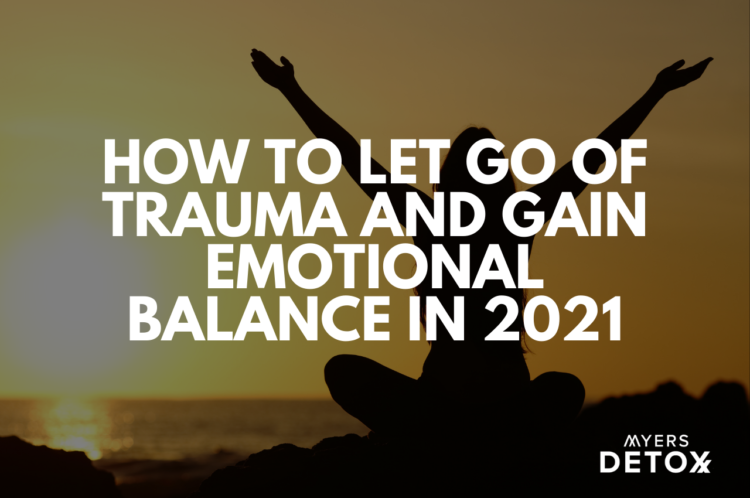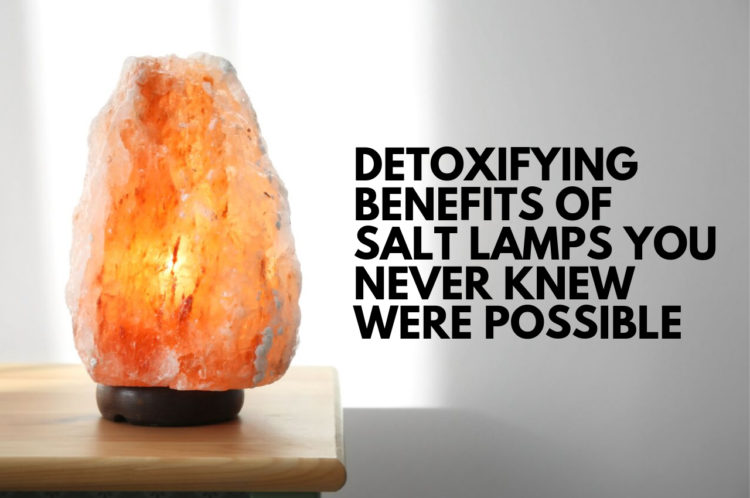How To Let Go of Trauma and Gain Emotional Balance in 2021

To say that 2020 has been a challenge may be the understatement of the century. The evolving pandemic coupled with this past year’s political drama is enough to make anyone feel stressed out, on edge, and searching for a sense of control. In fact, it’s safe to say that the events of 2020 are adding to all of our emotional trauma and stress.
But what has 2020 actually done to our nervous systems? While going through hard times, it’s easy to just stand “beside yourself”, and watch the chaos unravel from a detached place. However, even if you haven’t allowed yourself to get swept up in the emotional upheaval of this year, the impact may be silently causing inner turmoil that you’ve yet to acknowledge.
In this article, you’ll learn:
- What emotional trauma is
- How 2020 may have caused even more harm to your nervous system than you know
- Why children are especially susceptible to trauma
- How to detox the emotional chaos of 2020
What Is Emotional Trauma?
To understand emotional trauma, you must first grasp a bit about how your brain works. The trauma response, which can also be likened to a stress response, is really all about protecting you. When you experience a stressful event, certain areas of your brain get involved (the amygdala, hippocampus, and prefrontal cortex) to help you deal with the situation and, from a primitive perspective — help you survive.
Typically, under stress, your amygdala, the most primitive part of your brain, will light up while your prefrontal cortex, the more advanced part of your brain, shuts down. Meanwhile, your hippocampus, which is responsible for memories, may experience alterations in its architecture that could lead to issues with cognitive functions such as learning and memory[1][2].
From a neurophysiology perspective, when you experience a stressor, your subconscious sees it as a red flag, and it records the experience in your memory. It tries to capture every detail of the experience, the emotions, the physical feelings, the people, places, things involved — all of it. And it does this all in an effort to protect you so that hopefully, if the same situation occurs again, you will be on guard. Again, this is a primitive response because the stresses that would enter our ancestors’ lives were often much more threatening than what we deal with today. (think: predator in the wild vs. a traffic jam).
PTSD ( post-traumatic stress disorder) happens when the memory that your brain records become a trigger for an intense emotional reaction. Dr. Ray Gin explains this very well:
“Say you’re five years old, and you’re bit by a garden snake, and it punctured your skin. As a kid, you might cry because of the physical pain, fear, and on top of that, you see your parents freaking out.
At that point, the memory and the emotion of this experience are going to be recorded in your brain to help you in the next future incident. Now, unfortunately, our system isn’t perfect. So, instead of another snake that might trigger you, it could be a green garden hose, and you might stress out and freak out. Or you might see these really long green beans on the counter, and all of a sudden, you feel fear, and you start stressing out for no reason. And that’s how these stuck PTSD moments basically work.
A very similar thing happens to veterans of war that are triggered by loud noises that remind their brains of bombs or bullets buzzing by them.”
Immediately after a traumatic event, shock and denial are typical. However, the long term effects of trauma include unpredictable emotions, flashbacks, strained relationships, and sometimes physical symptoms like headaches and nausea. While all of these feelings are normal, trauma can ultimately make it hard for some people to move on with their lives[3].
How The Events of 2020 Are Adding to Emotional Trauma and Stress
In regards to 2020, research already shows that healthcare workers and children are showing signs of trauma due to the unprecedented circumstances[4][5].
Things like job loss, fear of getting sick, not being able to connect with loved ones, uncertainty around the future of the country, and no access to outlets like yoga, sports, and social interactions all contribute to feelings of fear, stress, and isolation.
I spoke with Carol Garner-Houston, a licensed occupational therapist specializing in neurodevelopment challenges, about the impact of COVID on us from a psychological perspective. She pointed to a study conducted on monkeys as an example of the detriments of isolation.
The study, carried out by Harry Harlow back in the 1950s, involved methods of isolation and maternal deprivation in monkeys to show the impact that social connection would have on development. In a laboratory setting, Harlow separated infant monkeys from their mothers and put them in separate cages away from their peers so that they were in total social isolation.
Of course, this inhumane study would no longer be allowed today. However, the results that Harlow recorded provide us with a glimpse at how the isolation of the current pandemic could be silently impacting our psychology and development.
Harlow found that the isolated monkeys showed disturbing behavior, such as staring off blankly or circling around their cages. Some monkeys even engaged in self-mutilation. Upon being reintroduced to the group, the monkeys were unsure how to reintegrate. Many of them stayed away from the other monkeys, and some even died after refusing to eat.
At the end of the day, this study showed that isolation resulted in crippled development in the monkeys. The inability to connect resulted in stunted social skills and even led to self-harm. It’s well understood that physical touch, in particular, is crucial for the healthy development of a child. Although many children connect via zoom and FaceTime, it doesn’t make up for the in-person quality time they’re used to[6]. And for adults, research also shows that lack of physical touch increases your risk for depression, while adequate physical touch can help to calm anxiety[7].
Niki Gratrix, an internationally renowned functional health practitioner, explains how adverse childhood events (ACES), like the events of 2020, can impact children’s health into adulthood.
“Research shows that experiencing six or more adverse childhood events corresponds with a 20-year reduction in your lifespan. Furthermore, just four ACES results in a 400% increase in neurological and mental health conditions like depression, anxiety, and Alzheimer’s. And with just two ACES, you have between 70-80% increased risk of autoimmune disease.
When these events happen in early childhood, as they are for many children today, they get ingrained in their developing brains and can become incorporated into their subconscious.”
ACES impact almost all systems in the body, so learning how to rebalance your body and mind after a traumatic episode is vital for not only your immediate health — but for long-term health as well[8][9][10].
At this point, you may be thinking that although COVID has been stressful, it doesn’t necessarily add up to be a “traumatic event,” but research says otherwise. According to an article published in the Journal of Pediatrics, the COVID-19 pandemic may be amplifying some ACES due to social isolation, job loss, school closures, and other stressors caused by the pandemic[4].
How To Let Go Of Your Trauma and Balance Out Emotionally
The good news is, the trauma of 2020 doesn’t have to throw a shadow onto your 2021. There are many ways that you can combat the emotional chaos that this last year has brought and emerge stronger and even more resilient.
Three ways that I recommend supporting your body include:
#1 Detoxification
From a practical standpoint, you can enhance your body’s natural ability to detox as a way to clear out excess stress hormones. Just as toxins can get lodged into your tissues and cause disturbance, excess stress hormones like adrenaline and cortisol can build up in your body and wreak havoc on your nervous system.
Can you detox trauma from your life? In a way, yes.
The best way to detox from stress is exercise, as it provides a two-for-one benefit. When you exercise, you increase your feel-good hormones and enhance your central nervous system’s activity, helping you combat feelings of stress[11][12]. At the same time, exercise helps you move stress hormones through your system, metabolizing them and breaking them down[13].
You can also fuel up your detoxification process with herbs and nutrients that support phase one and phase two detox. During phase one, your body neutralizes toxins in your body, and during phase two, it pulls them out — eliminating them once and for all.
Some herbs and foods that can support your detoxification system include broccoli sprouts, beets, dandelion root, milk thistle, and seaweed.
#2 Balance Out Emotionally
You may be thinking that balancing out emotionally is easier said than done, but there are a handful of tactics that you can use (beyond sheer willpower) that will help your mind relax and assist you in processing your emotions.
As the scientific understanding of the mind-body connection has deepened in the last several years, the importance of the vagus nerve has come into focus. Your vagus nerve runs from your brain all the way to your gut and sends signals between these two systems helping them to coordinate their functions. You could say that the vagus nerve has finally given us some solid proof of the mind-body connection, as the communication goes in both directions.
The vagus nerve is also one of your parasympathetic nervous system’s main components and is therefore involved in the “rest and digest,” or relaxation response. Low vagal tone is associated with poor emotional regulation and increased sensitivity to stress. High vagal tone, on the other hand, is associated with increased heart rate variability — a marker which indicates higher resilience and lower stress[14][15][16].
Stimulating your vagus nerve can, therefore, increase your resistance to stress and enhance your ability to process emotions. According to Niki Gratrix, some simple ways to enhance vagal tone include:
- 30-second cold shower
- Breathing exercises
- Loving-kindness meditation
- Yoga
- Tai chi
- Gratitude journaling
You can also turn to the experts for help. One tool that I’ve found especially helpful is the C.A.L.M. Guide created by Carol Garner-Houston. This guide is especially helpful for kids that are in need of extra support during these stressful times. You can also work with one of the Brain Harmony occupational therapists for even deeper one on one advising.
#3 Take Care Of Your Energetics
As crucial as it is to care for your physical body during times of stress, it’s equally important to bring balance to your energetic body. Your energy body, also known as your biofield, becomes imbalanced due to stress and stuck emotions and can impact your physical body.
Although it may sound a little out there — a field of energy around your body that impacts how you feel — knowledge of the biofield dates back thousands of years. Practices like pranic healing, qi gong, reiki, acupressure, and healing touch are just a handful of techniques that practitioners use to balance this energetic field.
These therapies can be used for a range of physical symptoms and are often incorporated to target psychological outcomes due to post-traumatic stress, depression, anxiety, and addictions[17].
Some practitioners explain that when a traumatic event takes place, emotions that are not ready to be processed can get stuck in this energy field. Since this field directly impacts your mind and body, this creates an imbalanced state that may make it hard for you to move forward.
There are many techniques such as EFT, EMDR, and Epsom salt baths that can help to neutralize these emotions, but one of the best ways to clear your field of past trauma is through sound therapy.
From a practical standpoint, it makes sense that using the vibration of sound would be the ultimate tool in balancing your energy field, as the field around your body is also made up of vibrations. Therefore, when you bring coherent vibrations into your field, it can help to entrain the energy around your body to become more balanced, releasing and neutralizing the vibrations that are stuck and are no longer serving you.
Niki Gratrix offers an Emotional Detox Program that includes the use of tuning forks to help clear your field so that you can experience more energy, balanced emotions, and a greater sense of joy. This program not only helps you to heal stuck emotions, but it also incorporates cutting-edge psychology along with tips for enhancing emotional intelligence and stimulating your vagus nerve.
Takeaway
As we move into 2021, many people are ready to say goodbye to the chaos, unrest, and trauma of 2020. Although this is a beautiful sentiment, the reality is that we can’t just pretend like the events of 2020 didn’t happen.
Trauma is an often misunderstood concept, with most people thinking of only the big T traumas like physical or emotional abuse, loss of a loved one, or some horrific accident. The truth, however, is trauma can come in many shapes and sizes.
Research already suggests that children are experiencing the events of 2020 as a trauma, and there is no telling how this is going to play out in their lives as they get older. The same is true for adults, especially if you don’t already have secure coping skills in place.
All of this to say, there has never been a more crucial time to put the emotional health of yourself and your loved ones front and center. 2020 was a difficult year, but you don’t need to carry the pain with you. Clear the emotional trauma of this year so 2021 can be the fresh start you’ve been waiting for.
Click Here for References+
-
Bremner, J. Douglas. “Traumatic stress: effects on the brain.” Dialogues in clinical neuroscience 8.4 (2006): 445.
-
Kim, Eun Joo, Blake Pellman, and Jeansok J. Kim. “Stress effects on the hippocampus: a critical review.” Learning & memory 22.9 (2015): 411-416.
-
Sanders, Lee M. “Is COVID-19 an adverse childhood experience (ACE): Implications for screening for primary care.” The Journal of Pediatrics 222 (2020): 4-6.
-
Ardiel, Evan L., and Catharine H. Rankin. “The importance of touch in development.” Paediatrics & child health 15.3 (2010): 153-156.
-
Cochrane, Nils. “Physical contact experience and depression.” Acta Psychiatrica Scandinavica (1990).
-
Felitti, Vincent J., et al. “Relationship of childhood abuse and household dysfunction to many of the leading causes of death in adults: The Adverse Childhood Experiences (ACE) Study.” American journal of preventive medicine 14.4 (1998): 245-258.
-
Brown, David W., et al. “Adverse childhood experiences and the risk of premature mortality.” American journal of preventive medicine 37.5 (2009): 389-396.
-
Morgan, Julie A., Frances Corrigan, and Bernhard T. Baune. “Effects of physical exercise on central nervous system functions: a review of brain region specific adaptations.” Journal of molecular psychiatry 3.1 (2015): 3.
-
Laborde, Sylvain, Emma Mosley, and Julian F. Thayer. “Heart rate variability and cardiac vagal tone in psychophysiological research–recommendations for experiment planning, data analysis, and data reporting.” Frontiers in psychology 8 (2017): 213.
-
McLaughlin, Katie A., et al. “Low vagal tone magnifies the association between psychosocial stress exposure and internalizing psychopathology in adolescents.” Journal of Clinical Child & Adolescent Psychology 44.2 (2015): 314-328.
-
Breit, Sigrid, et al. “Vagus nerve as modulator of the brain–gut axis in psychiatric and inflammatory disorders.” Frontiers in psychiatry 9 (2018): 44.
-
Jain, Shamini, et al. “Clinical studies of biofield therapies: Summary, methodological challenges, and recommendations.” Global Advances in Health and Medicine 4.1_suppl (2015): gahmj-2015.









